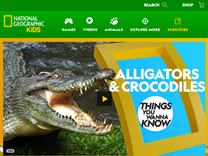Octopuses are sea animals famous for their rounded bodies, bulging eyes, and eight long arms. They live in all the world’s oceans but are especially abundant in warm, tropical waters. Octopuses, like their cousin, the squid, are often considered “monsters of the deep,” though some species, or types, occupy relatively shallow waters. Most octopuses stay along the ocean’s floor, although some species are pelagic, which means they live near the water’s surface. Other octopus species live in deep, dark waters, rising from below at dawn and dusk to search for food. Crabs, shrimps, and lobsters rank among their favorite foods, though some can attack larger prey, like sharks. Octopuses typically drop down on their prey from above and, using powerful suctions that line their arms, pull the animal into their mouth. The octopus performs its famous backward swim by blasting water through a muscular tube on the body called a siphon. Octopuses also crawl along the ocean’s floor, tucking their arms into small openings to search for food. Seals, whales, and large fish prey on octopuses. If threatened, octopuses shoot an inky fluid that darkens the water, confusing the aggressor. The octopus can also change to gray, brown, pink, blue, or green to blend in with its surroundings. Octopuses may also change color as a way to communicate with other octopuses. Octopuses are solitary creatures that live alone in dens built from rocks, which the octopus moves into place using its powerful arms. Octopuses sometimes even fashion a rock “door” for their den that pulls closed when the octopus is safely inside.
Comeback critters See how animal species in trouble have come back from the brink

